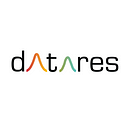Will AI Take Over Jobs?
Authors: Yulia Anashkina (Project Lead), Aarya Khanna, Audrey Huang, Janelle Ah Kit, Kathryn Li
With the increasing presence and abundant abilities of AI, many are concerned that AI will “outsmart” them and possibly replace their jobs. This concern is shared by people from many industries– artists and engineers alike. This article delves into the looming question of “Will AI take over my job?” We specifically conducted analysis on overall AI impact on the job market, AI impact based on industry domains, AI workload ratios of domains, AI implementation optimization, and geographical analysis of AI postings. If you want to find out if you’re in trouble for the future, then keep reading!
First, we want to understand how AI impacts the job market overall. AI impact is evaluated by a percentage representing AI’s influence on respective job sectors. Analyzing the the influence of AI over 4706 jobs, evidently, the impact of AI on the job market exhibits a right-skewed distribution; the median impact being approximately 25%. Although AI’s impact on the overall job market seems to be minimal, the range is substantial, with impacts varying from a minimum of 10% to a maximum of nearly 100%. Consequently, we will explore if AI poses a threat to specific industries within the job market.
The first boxplot shows the AI Impact percentage across all industry domains. Though many think certain jobs are more prone to be “taken over” by AI, this boxplot shows otherwise. As evident, the boxplot distributions are all similar, exposing that each industry in the workforce is impacted by AI equally. Additionally, the mean impact is around 25% — showing that AI does not have a huge impact on peoples’ jobs. The second boxplot shows the AI workload ratio across all industry domains. Unlike the previous boxplot, there are some discrepancies in the means amongst the industries. Law enforcement has the highest AI workload Ratio of 23%, while Communication & PR has the lowest percentage of 18%. There are also some outliers in Sales and Marketing and Supply Chain and Logistics that represent completely automated processes. These findings reflect the real world as AI is not just merely Chat-GPT or crazy robots– it also includes computers, fingerprint detection, advertising online, and more. AI used in each industry varies– Law Enforcement uses things like fingerprint detection, which is a large part of Law Enforcement, while Communications and PR may use AI for advertising occasionally. Again, the medians of all domains are lower than 25% and therefore people should not be concerned that AI is taking over their jobs. At least not yet…
This visualization displays how increases in the number of AI models, defined as artificial intelligence based systems which are implemented or associated with a specific job role, correlate with a diminishing of its impact across different domains, which are broader industry categories for similar jobs. The trend lines show that while the initial deployment of AI models leads to a very significant impact, the additional impact of each subsequent model tends to diminish. In other words, the first few AI models in each domain appear to have the most influential impact whereas later models are less impactful. However, there still appears to be relatively high variability around the polynomial regression trend line, suggesting that there are still instances where adding additional models has had notable benefits. These cross-industry trends suggest that while AI models can transform job roles, focusing on optimizing existing models rather than increasing their quantity could lead to more sustainable and impactful AI integration, potentially mitigating fears of widespread job loss.
After examining AI in the workplace, we proceeded to investigate the global implications of AI through geographical analysis. This visualization demonstrates the increasing AI job postings throughout 8 years from 2014 to 2022. Despite fluctuations, most AI job postings have more than doubled over time and seems to only continue increasing. As shown above, the United States, United Kingdom, and Canada have the greatest overall trend in AI job postings, indicating an increasing number of AI related jobs. This trend demonstrates how job markets are seeking AI implementation to replace traditional jobs, supporting the idea that AI is becoming a threat.
Prominently, the United States has the largest increase in AI job postings, almost quadrupling over time. This dominance may be explained by the immense research and investment poured into AI within the US economy. To learn more about the trend of AI, we then investigated the trend of AI Job Postings specifically within the United States.
This visualization explores the frequency of AI job postings across the country, highlighting the specific states where skills or experience in AI may be lucrative and favorable. Observing the states with a high saturation of AI job postings, most notably California, alludes to the presence of a robust tech industry within these regions. However, states with a moderate concentration of job postings could suggest a rising industry due to the introduction of more research facilities and tech companies — for instance, the relocation of Tesla company headquarters from California to Texas. On the other hand, regions with lower to virtually no AI job postings, such as the South and Midwest, could be explained by a greater emphasis on agriculture among other industries, resulting in a slower adoption of technology and less demand for AI-related employment.
Our analysis reveals that AI impacts on industries and across various locations are present, but are not alarming. While we see that all countries have an increase in AI job postings, we also note that industry domains are all equally affected by AI. Therefore, we are fairly confident AI will not take over jobs– though it may be implemented and used alongside human tasks. Further examination of what kind of AI presence is occurring in jobs will be an interesting next step to take.
